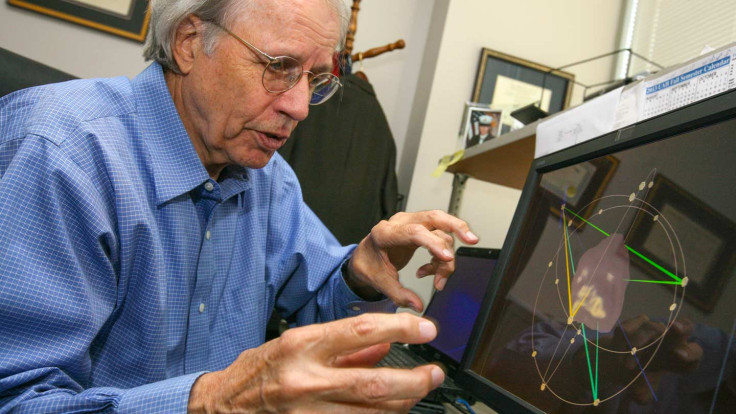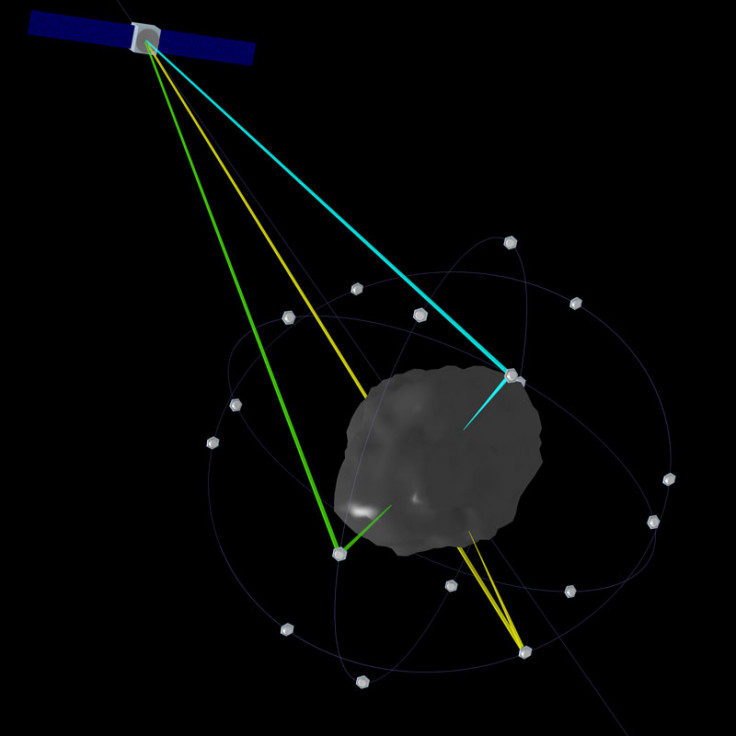Laser-powered spacecraft energy delivery system could save the Earth from asteroids

A laser-powered energy system, invented by US scientists, could be used to power orbiting spacecraft capable of deflecting asteroids away from Earth.
The system created by the University of Alabama in Huntsville (UAH) requires multiple micro-spacecraft to be situated in specific sets of orbital paths around the Earth, and each spacecraft collects and stores solar energy from the sun.
When that energy is required, the energy-storing micro-spacecraft can use lasers to send energy to other spacecraft orbiting in space, negating the need for them to carry heavy fuel tanks.
If an asteroid were heading directly towards the Earth, the micro-spacecraft could surround the asteroid and send all their energy to one large spacecraft. That would then send out concentrated laser beams of energy to heat up spots of the asteroid, causing those spots to eject and for the asteroid to move in the opposite direction to the ejected material.
Generating and redirecting energy in space
The system has just received its first patent and makes use of optical quantum phenomena, whereby individual quantum particles can be controlled and directed.

"This method is designed to use optical phenomena – again quantum optical phenomena – but very well proven and widely accepted optical quantum phenomena to maximise the efficiency and precision of the processes," said Dr Richard Fork, an electrical and computer engineering professor at UAH.
"Sunlight does, of course, distribute energy in space. However, energy in the form of sunlight cannot be directed, delivered or concentrated nearly as precisely and efficiently, or at the peak energies that are maximally efficient for propulsive thrust, as can the coherent light generated by laser systems."
The energy delivery system is the culmination of years of work by researchers, professors and successive batches of students studying electrical and computer engineering at the university.
The range that the energy can be transmitted from the energy-generating micro-spacecraft depends on how big its optical systems are. If the optical systems have receiving and transmitting apertures of one meter radius and the light is one micron wavelength in dimension, then it can be transmitted over a distance of 6 megametres (6,000km).
Finding ways to protect the Earth from asteroids
"The patent is significant in that it gives UAH an advantage in launching what may be the first enterprise designed to provide energy generated in space and delivered in space for commercial purposes, as well as for non-commercial applications of general interest, such as successfully redirecting asteroids or other objects that may threaten Earth," said Dr Fork.
"The underlying physical phenomena are non-trivial. However, we believe we can clarify and evaluate a highly productive strategy we have in mind by exploring the basic phenomena here in our terrestrial laboratories at UAH given a year or so of adequate funding.
"I think that SpaceX and other companies might be interested in this patent, although that is speculation on my part at this time."
Nasa is currently working on the Asteroid Redirect Mission – a robotic mission in the mid-2020s to visit a large asteroid near to Earth, detach a multi-ton boulder from its surface and then redirect that boulder into a stable orbit around the moon.
Apart from advancing research for the manned mission to Mars by testing out Nasa's solar-electric propulsion systems, the project will also demonstrate and improve defensive techniques for deflecting asteroids from Earth.
© Copyright IBTimes 2025. All rights reserved.






















